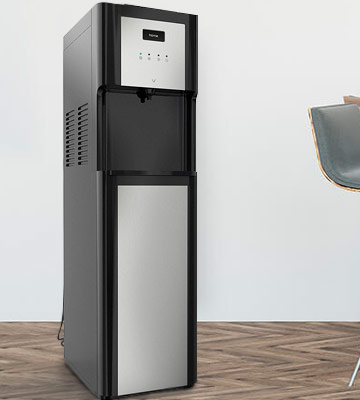Water dispensers are very convenient within every household. They come with a myriad of benefits, including avoiding the time spent in boiling water and promoting healthful drinking. They also reduce the waste of tiny bottles found in the.
The machines run on electric power and come with a tank (or tanks) with hot and cold water, a refrigeration system as well as a heater. They also come with advanced hygiene features that can prevent cross contamination.
UV Filtration
Ultraviolet (UV) system for water purification make use of UV rays to kill bugs, viruses, parasites and other microorganisms harmful to health that may be harmful to water. They’re easy to clean, and do not have any adverse effect on the taste of the water.
The UV radiation penetrates the outer layer of cell’s body. It damages the nucleic acid of DNA in the body, which disrupts its ability to reproduce. This makes it impossible for the organism to reproduce or infect other cells.
In addition to the normal lighting bulb replacement, maintaining for a UV system is very minimal. The lamp’s UV light is shielded by a quartz shield that allows wavelengths to pass through, but also blocks the passage of other particles. The sleeve is to be assessed and changed regularly, usually every two years.
The most appealing aspect of UV is the fact that it doesn’t add any chemicals to the water. It is also extremely simple to operate, making it ideal for remote locations and for situations in which the water must be cleansed and disinfected swiftly. But, it is not able to eliminate dissolved impurities like heavy metals, salts and chlorine from water. It should be used along with other methods of filtration. The ideal is to have a pre-filter be employed to make sure that all the water flowing into the chamber is clean. This is particularly important if the source of water is an untreated water source such as a well or lake.

Carbon Filtration
Activated carbon is by far the most common type of filter used to remove taste and odor from water. It does this by adsorbing substances that do not stick to water. These include volatile organic compounds (VOCs) chlorination and hydrogen sulfide, which cause unpleasant tastes and odors in water that is used for drinking.
During the process of adsorption carbon draws these chemicals to its surface, like a sponge absorbs gas through its pores. Carbon filters are rated by their size and the number of the particles they eliminate to the micron scale. When selecting a carbon filter, you should try to choose a filter with a low micron number to ensure that you don’t remove the beneficial minerals in the water.
It is essential to replace your carbon filter regularly This can be accomplished by shutting off the water dispenser and letting it run through a backwash cycle. It will prevent the growth of contamination and bacteria from building up in hard-to-reach parts of the dispenser, which could lead to poor-quality and unclean drinking water. Clean filters will be sure you don’t see mold growth in the water spout in your dispenser, which can spread dangerous organisms like Salmonella and E. coli.
Sediment Filtration
Sediment filters use mechanical filtering may loc nuoc uong nong lanh to physically stop unwanted particulate matter from infiltrating your water supply. They act like a screen opening allowing the refreshing breeze to flow across your property, but you’re not wanting dirt or leaves to enter with the breeze.
A sediment filter’s micron rating indicates what size particles it’s able to eliminate from your water source. As a guideline an a 5-micron filter will remove anything visible to the naked eye in contrast, a micron-sized filter will eliminate anything too small to see without a microscope.
Sediments can clog your household appliances, cutting off fittings and valves, or reducing their lifespan. They also can prevent various filtration systems from operating efficiently. The whole-house sediment filter helps keep your home operating efficiently and help you save costs in the future.
The majority of sediment filters are constructed of plant cellulose fibres. They have a large surface space and can trap particles in their layers. They can be either wrapped in string or pleated, based on the design of their construction and kind of material they are made from. Pleated filters, that are shape-like accordion, feature many layers of filtering media as well as a high surface area. They can also be washed and reuseable. String-wound filters have tightly wound cotton, polyester, or polypropylene string that is stretched and wrapped around a core. These filters create a gradient in density. The outer layer holds more large particles, whereas the inside layer is used to store smaller particles.